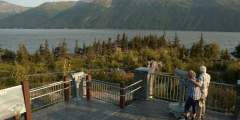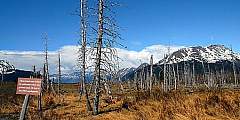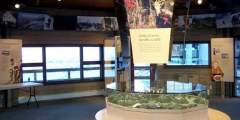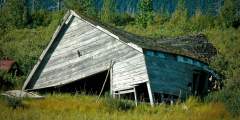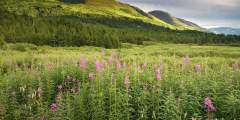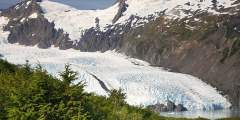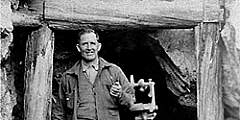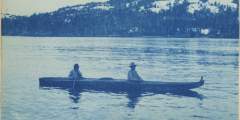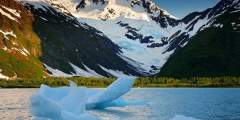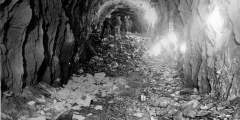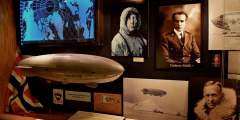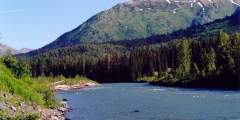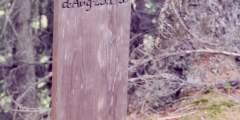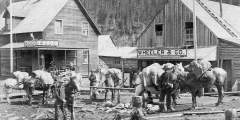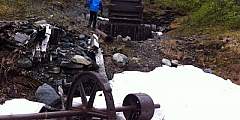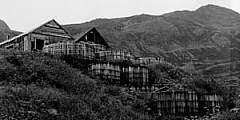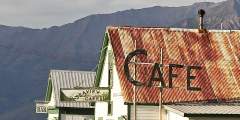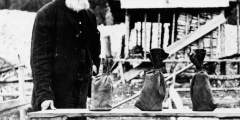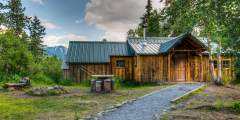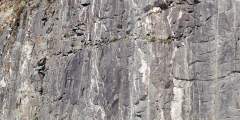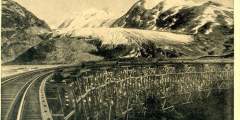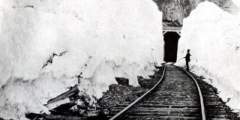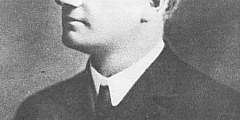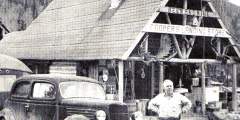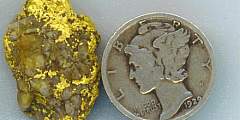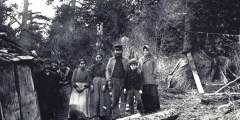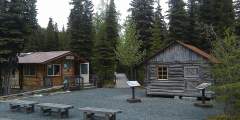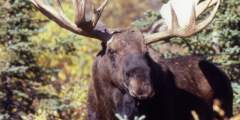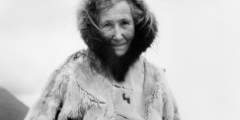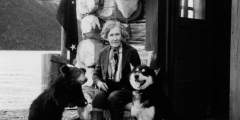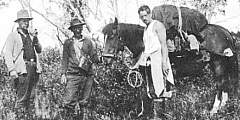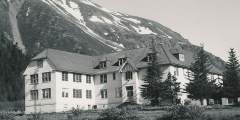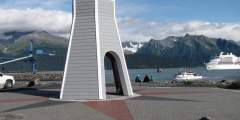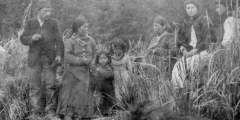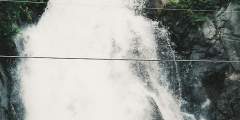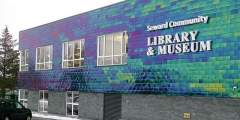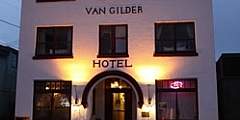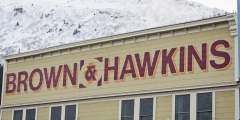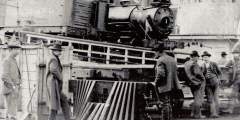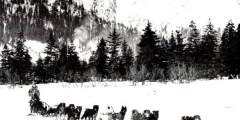KMTA National Heritage Area Guide
Quick: what’s the longest combined rail and highway tunnel in North America? It’s the Anderson Memorial Tunnel, and you’ll drive through it on the scenic and historic drive to Whittier. The Kenai Mountains-Turnagain Arm National Heritage Area is a place whose valleys and mountains, communities and people tell the larger story of a wild place and a rugged frontier. This audio guide gives you the inside scoop on its fascinating history. You’ll meet bigger-than-life historical characters like Alaska Nellie (as well as a few ghosts), see the original Iditarod trail, and learn about the creation of the Alaska Railroad. We’ll give you a taste of Gold Rush history and pioneer days, as well as a look at the native Alaskans who can truly call this area home. And of course we’ll tell you all about the forces of nature that have sculpted the sublimely beautiful landscape.
Show Map
Points of Interest
KMTA National Heritage Area Guide
The 1964 Earthquake devastated transportation routes from Anchorage to Seward. A daring rescue of the rail bridge over Twenty-Mile Creek helped keep the line open in the days following the quake.
The area of Whittier has long served as passage between Prince William Sound and Turnagain Arm. The Alaska Engineering Expedition envisioned a rail line out to this largely unsettled area back in 1914, but it was the U.S. Army that made Whittier where and what it is.
The Sugpiaq are maritime people of south and southwest Alaska, adept at utilizing water-based resources and handling intense coastal weather. The name Sugpiaq comes from the word “Suq,” meaning “real people.” Alutiiq, the Sugpiaq term for the Russian name “Aleut” has been adopted by many contemporary Native people of this diverse heritage; both terms are commonly used today. The Sugpiaq who inhabit the outer coastline of the Kenai Peninsula… ...more
Glaciers are formed when more snow accumulates than melts through the seasons. The weight of the snow creates pressure that turns snowflakes into dense, rivers of ice that shape the land.
Whittier was built as a deepwater port and railroad terminus to transport fuel and supplies during World War II. Come inside the Anchor Inn where a small but fascinating museum gives a glimpse of Whittier’s interesting history.
Trails were established by prospectors traveling through the Turnagain Pass area. The Ingram Creek trail followed the creek from Turnagain Arm up to Turnagain Pass. After the pass, the trail followed Granite Creek to Sixmile Creek, which then led prospectors to Sunrise and Hope.
Palmer Creek and the road that follows it were named after George Palmer, who in 1894 first discovered gold on its banks. The creek was the site of early placer mining and later lode mining. Evidence of the historic Lucky Strike and Hirshey mines, as well as the Swetmann camp, can be found along trails that lead to Palmer Lakes. Several hiking trails are accessible from the Palmer Creek Road.
Operated by the non-profit Alaska Mountain and Wilderness Huts Association, Manitoba Cabin is intended to promote wilderness experience and camaraderie in the spirit of European-style trekking huts. While very popular among backcountry skiers during winter weekends, the facility often has openings during weekdays. During the summer, you might have the entire place to yourself.
The Kenaitze Indian Tribe’s Dena’ina ancestors, recognizing the abundance of the place called Yaghanen, “the good land,” settled along the banks of its rivers and Tikahtnu (Cook Inlet). In the past several years, one location the Kenaitze Tribe has focused on is Sqilantnu, meaning “the grocery store,” located in the area now called Cooper Landing. Today, Kenaitze Indian Tribe partners with the Chugach National Forest to preserve, protect and ...more
The Jesse Lee Home for Children is the second of three child welfare institutions in Alaska to bear the name. The first was established at Unalaska in the Aleutian Islands in 1890. The home was moved to Seward on Resurrection Bay in 1926. Following damage to the home in the 1964 earthquake, the Jesse Lee Home was relocated to its present location in Anchorage in 1965.
The local history museum, operated in partnership with the Resurrection Bay Historical Society, is situated on the first floor. The library, located on the second floor, offers computer with internet access, youth programs, and preschool story time for no cost.
Segments of the trail near Seward (Nash Road) and Girdwood (Alyeska) can be hiked during summer.

